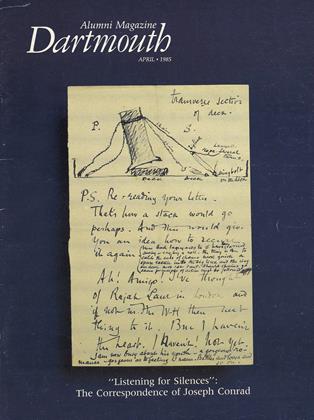Samson Occom, unlike Eleazar Wheelock, was a naturally gifted teacher. Describing his teaching methods among the Montauk Indians, Occom wrote: "I found Difficulty with Some Children, who were Somewhat Dull. Most of these can soon learn to Say over their Letters, they Distinguish the Sounds by the Ear, but their Eyes can't Distinguish the Letters, and the way I took to Cure them, was by making an Alphabet on Small bits of paper, and glued them on Small Chips of Cedar ... I put these letters in order on a Bench, then point to one Letter and bid a Child to take notice of it, and then I order the Child to fetch me the Letter from ye Bench . . . When they can bring any Letters, this way, then I Just Jumble them together, and bid them to Set them in Alphabetical order, and it is a Pleasure to 'em; and they soon Learn their Letters this Way ..."
Occom spent twelve years among the Montauk on Long Island, serving both as teacher and minister. While among them, he married an Indian woman named Mary Fowler, with whom he had ten children. Life as an Indian missionary among Indians was filled with hardships. Poor health, persistent debts, and the burden of a large family marked Occom's years with the Montauk. At times he received money from the Church of England to discharge his debts, and he also received a grant of fifteen pounds a year a mere pittance even then. But the substantial help he had expected from the Church never came.
For over twenty years Occom felt a debt of gratitude toward Wheelock, and repeatedly he deferred to Wheelock's wishes. His faith was shattered, of course, when Wheelock founded Dartmouth College. Returning from England, Occom went to Mohegan (in Connecticut), where for several years his life was beset by poverty and lethargy. His inactivity ceased in 1773, when be became involved in a plan to move the Christian Indians of the seven towns of Charlestown, Groton, Stonington, Niantic, Farmington, Montauk, and Mohegan to a new settlement apart from the whites. The land they hoped to settle was in the Oneida country of New York, and in 1774 Occom with others negotiated a transfer of land from the Oneidas to the Christian Indians. The first company of Indians set out from Connecticut in the spring of 1775.
Occom was now fully involved in an undertaking antithetical to that of Wheelock. Whereas Wheelock intended to train whites to serve as missionaries among the Indians, Occom was convinced that the Indians could survive only if they avoided future encroachment from the whites.
The move to New York was interrupted by the Revolutionary War, but in 1784 it was resumed, and in 1785 the community of Brothertown was founded. For the remainder of his life, Occom solicited money to pay for the move and worked as an itinerant preacher among the Indians. From 1790 on problems surfaced within Brothertown, but Occom remained committed to his idea that Indians should live apart from whites. One of his last acts was an appeal to the New York General Assembly in April 1792 to pass a measure allowing for the forcible ejection of whites who settled on the Christian Indians' land. Four months later Occom died. The measure he sought was finally granted in March 1795.
 View Full Issue
View Full Issue
More From This Issue
-
 Cover Story
Cover StoryListening for the Silences
April 1985 By Laurence Davies -
 Feature
FeatureMinimum Standards
April 1985 By Gayle Gilman '85 -
 Feature
FeatureKey to Success: Dartmouth's Athletic Sponsor Program
April 1985 By Jim Kenyon -
 Feature
FeatureHistorical Notes on the Upper Valley
April 1985 By Jerold Wikoff -
 Feature
FeatureFROM THE DESK OF THE PRESIDENT
April 1985 -
 Article
ArticleWorth his salt
April 1985 By JOseph Berman '86







